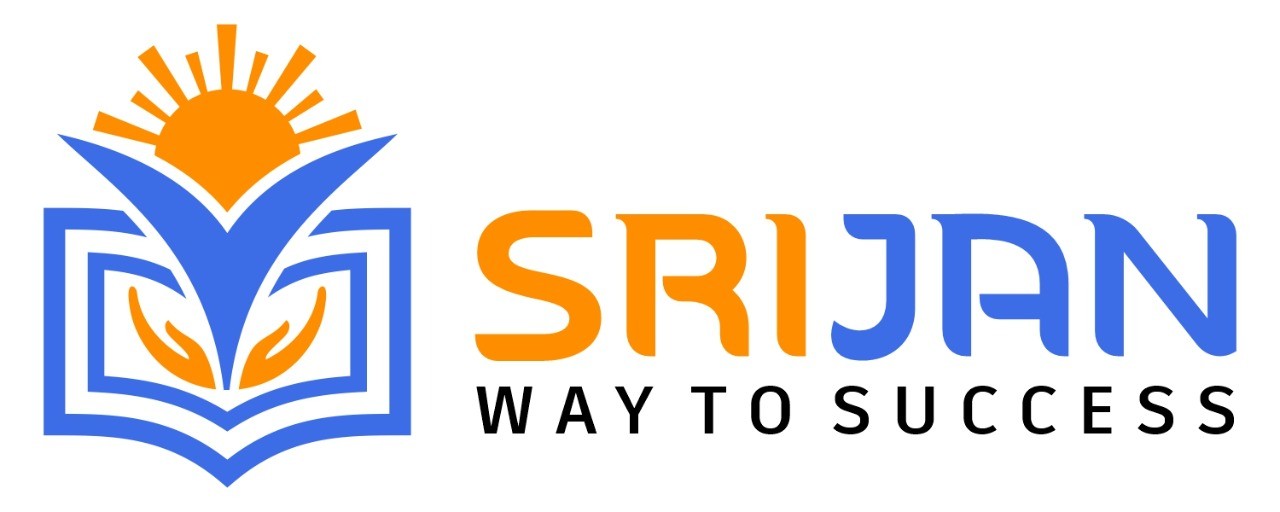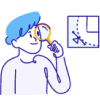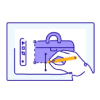Complete SAP BODS Training: Online Course and Certification
SAP BODS Training || SAP BODS certification Training || SAP BODS Online training || SAP BODS self-paced training || SAP BODS Instructor-Led training
Key Features of Training:
- 30+ Hrs Instructor-led Training
- Mock Interview Session
- Project Work & Exercises
- Flexible Schedule
- 24 x 7 Lifetime Support & Access
- Certification and Job Assistance
SAP BODS(BusinessObjects Data Services):
SAP BODS (SAP BusinessObjects Data Services) is an ETL (Extract, Transform, Load) tool used by enterprises to integrate and manage data across various systems. It enables data extraction from various sources, data transformation and cleaning, and data loading into various target systems such as data warehouses, databases, and applications. SAP BODS is part of the SAP BusinessObjects suite of applications and provides a powerful platform for data integration, data quality, and data governance. It is used by enterprises for data warehousing, data migration, data synchronization, and data quality. SAP BODS is highly scalable and can handle large volumes of data, making it a popular choice among enterprises for their data integration needs.
Prerequisites: Who can attend SAP BODS Training?
- Basic knowledge of SQL and database concepts.
- Familiarity with data warehousing concepts and data modeling.
- Understanding of basic data transformation concepts such as filtering, aggregation, and sorting.
- Basic knowledge of programming concepts and experience with at least one programming language.
- Basic understanding of the SAP landscape and SAP systems.
- Good Communication Skills.
Responsibilities of SAP BODS Consultant:
- Analyzing business requirements
- Designing and developing ETL processes
- Developing data quality rules
- Creating data models
- Testing and debugging
Course Benefits
- Job opportunities:
- Promotion opportunities (Salary Hike):
- Increased productivity:
- Improved decision-making
- Gain in-demand skills
What is future of SAP BODS Consultant?
- Increasing demand for data integration solutions
- Growing demand for data quality
- Integration with other SAP solutions
- Advancements in technology
The fee for SAP BODS(BusinessObjects Data Services) training can vary depending on several factors such as the location, duration of the course, training format, and level of expertise. SAP offers various training options for MM, including instructor-led courses, e-learning courses, and virtual live classrooms.
For More details you can Register
SAP BODS(BusinessObjects Data Services) Certification FAQ's:
1. What is SAP BODS Certification?
A:SAP BODS Certification is a professional certification offered by SAP AG to validate the skills and knowledge of individuals working with the BusinessObjects Data Services (BODS) tool. It ensures that a certified individual has the required expertise to use BODS for data integration, data quality, and data management.
2. What are the prerequisites for SAP BODS Certification?
A: There are no mandatory prerequisites for SAP BODS Certification. However, it is recommended that candidates have a good understanding of data integration and data management concepts and hands-on experience with BODS.
3. How do I prepare for SAP BODS Certification?
A: To prepare for SAP BODS Certification, you can refer to the official SAP BODS Certification Guide, attend training sessions, and practice with sample certification questions. You can also find useful resources and forums online to help you with your preparation.
4. How much does SAP BODS Certification cost?
A: The cost of SAP BODS Certification varies depending on your location and the certification level you are applying for. You can check the SAP website or contact SAP directly for the latest certification fee information.
5. How long does SAP BODS Certification last?
A: SAP BODS Certification is valid for two years. After that, you will need to renew your certification to ensure that your skills are up to date.
6. What are the levels of SAP BODS Certification?
A: SAP BODS Certification is available in three levels: Associate, Professional, and Master. The Associate level is the entry-level certification, while the Professional and Master levels require more experience and expertise.
7. How many questions are there in SAP BODS Certification exams?
A: The number of questions in SAP BODS Certification exams varies depending on the certification level. The Associate level exam typically has around 80 questions, while the Professional and Master level exams have around 90-100 questions.
8. What is the passing score for SAP BODS Certification exams?
A: The passing score for SAP BODS Certification exams is 64%. This means that you need to answer at least 64% of the questions correctly to pass the exam.
9. How long does the SAP BODS Certification exam take?
A: The SAP BODS Certification exam typically takes around 180 minutes (3 hours). However, the exact duration may vary depending on the certification level and the number of questions.
10. Where can I take the SAP BODS Certification exam?
A: You can take the SAP BODS Certification exam at any authorized SAP training center or Pearson VUE testing center. You can find the nearest testing center on the SAP website.
SAP BODS(BusinessObjects Data Services) Certification:
SAP BODS (BusinessObjects Data Services) Certification is a professional certification offered by SAP AG that validates the skills and knowledge of individuals working with the BODS tool for data integration, data quality, and data management. The certification is available at three levels: Associate, Professional, and Master.
The Associate level is an entry-level certification that validates a candidate's knowledge of basic concepts and functionalities of BODS. The Professional level is for experienced professionals with a deep understanding of BODS and its advanced functionalities. The Master level is for experts who have demonstrated exceptional knowledge and expertise in BODS.
To prepare for the SAP BODS Certification exam, candidates can refer to the official SAP BODS Certification Guide, attend training sessions, and practice with sample certification questions. The certification exam typically consists of multiple-choice questions, and the passing score is 64%. The exam duration may vary depending on the certification level and the number of questions.
SAP BODS(BusinessObjects Data Services) Curriculum:
1. Introduction to SAP BODS:
- Overview of SAP BODS
- Architecture of SAP BODS
- Components of SAP BODS
- Data integration, data quality, and data management
2. SAP BODS Designer:
- Introduction to BODS Designer
- Creating Data Integrator jobs
- Creating workflows and data flows
- Creating transformations, mappings, and workflows
- Building data quality rules
3. SAP BODS Repository Management:
- Introduction to BODS Repository Management
- Managing objects in the repository
- Using Query Builder, metadata reports, and other repository management tools
4. SAP BODS Data Quality:
- Introduction to SAP BODS Data Quality
- Using Data Quality Transformations
- Using Address Cleanse Transformations
- Standardizing and cleansing data
5. SAP BODS Platform Architecture:
- Introduction to SAP BODS Platform Architecture
- Installing and configuring BODS
- Managing BODS Job Server groups
- Monitoring and troubleshooting BODS
6. SAP BODS Real-Time Jobs:
- Introduction to SAP BODS Real-Time Jobs
- Creating and configuring real-time jobs
- Monitoring real-time jobs using the Real-Time Services module
7. SAP BODS Administration:
- Introduction to SAP BODS Administration
- Managing security and user accounts
- Managing data connectivity
- Managing batch jobs and schedules
8. SAP BODS Advanced Features:
- Introduction to SAP BODS Advanced Features
- Using scripting languages like Python and SQL
- Using BODS with Hadoop and Big Data technologies
- Integrating SAP BODS with other SAP products like SAP HANA and SAP BusinessObjects.
9. SAP BODS Integration with SAP:
- Integration of SAP BODS with SAP systems like SAP BW, SAP ERP, and SAP CRM
- Extracting and loading data from SAP systems using BODS
- Transforming data in SAP systems using BODS
10. SAP BODS Performance Optimization:
- Techniques for improving the performance of BODS jobs
- Designing efficient workflows and data flows
- Configuring BODS for optimal performance
11. SAP BODS Best Practices:
- Best practices for designing and implementing BODS jobs
- Best practices for managing the BODS repository
- Best practices for troubleshooting BODS issues
12. SAP BODS Project Implementation:
- Planning and scoping BODS projects
- Designing and implementing BODS jobs for specific project requirements
- Testing and validating BODS jobs
- Deploying and maintaining BODS jobs
13. SAP BODS Data Migration:
- Overview of data migration
- Data migration strategies
- Using BODS for data migration
- Mapping and transforming data during migration
14. SAP BODS Data Profiling:
- Introduction to data profiling
- Creating data profiles using BODS
- Analyzing and interpreting data profiling results
- Using data profiling to identify data quality issues
15. SAP BODS Change Data Capture (CDC):
- Overview of CDC
- Using CDC in BODS
- Capturing changes to source data
- Applying changes to target data
16. SAP BODS Data Replication:
- Overview of data replication
- Using BODS for data replication
- Replicating data between different systems
- Managing data replication jobs in BODS
17. SAP BODS Cloud Integration:
- Introduction to cloud integration
- Using BODS with cloud-based data sources
- Configuring BODS for cloud integration
- Managing BODS jobs in a cloud environment
SAP BODS(BusinessObjects Data Services) Interview Questions & Answers:
1. What is SAP BODS?
A: SAP BODS is a data integration and management tool that allows organizations to extract, transform, and load data from various sources into a single destination system. It is used for data integration, data quality management, data migration, real-time data integration, cloud integration, and data replication.
2. What are the different types of transformations available in SAP BODS?
A: SAP BODS provides various types of transformations such as Query, Case, Map Operation, Merge, Pivot, Reverse Pivot, Table Comparison, Validation, and Custom Transformations.
3. How do you create a Datastore in SAP BODS?
A: To create a Datastore in SAP BODS, follow these steps:
- Open the Designer tool and select the local repository.
- Right-click on the Datastore folder and select "New Datastore."
- Select the type of Datastore, enter the necessary details like the name, database credentials, and connection details.
- Test the connection and save the Datastore.
4. What is the difference between a Datastore and a Repository in SAP BODS?
A: A Datastore in SAP BODS is a storage location for metadata related to a specific data source, while a Repository is a central storage location for all the metadata used in SAP BODS. A Datastore contains the connection information for a specific data source, while a Repository contains all the metadata related to the SAP BODS projects and jobs.
5. What is Data Profiling in SAP BODS?
A: Data profiling is the process of analyzing data to understand its structure, completeness, accuracy, and consistency. In SAP BODS, data profiling can be used to analyze data from various sources and identify data quality issues. The tool provides various data profiling techniques like data structure, data quality, and data relationships analysis.
6. What is Change Data Capture (CDC) in SAP BODS?
A: Change Data Capture (CDC) is a process of identifying and capturing changes made to the source data and replicating those changes to the target system in real-time or near real-time. SAP BODS provides CDC techniques like timestamp-based CDC, trigger-based CDC, and log-based CDC.
7. What is the difference between a Batch Job and a Real-time Job in SAP BODS?
A: A Batch Job in SAP BODS is a job that runs on a schedule or on-demand and processes data in batches. A Real-time Job, on the other hand, is a job that runs continuously and processes data in real-time or near real-time.
8. What is the purpose of a Dataflow in SAP BODS?
A: A Dataflow in SAP BODS is used to design and implement the data integration process. It contains various objects like sources, targets, transformations, and mapping rules that define the flow of data from source systems to target systems.
9. What is a Metadata Query in SAP BODS?
A: A Metadata Query in SAP BODS is a query that retrieves metadata from the SAP BODS Repository. It can be used to retrieve metadata about objects like tables, columns, and Datastores.
10. What is the difference between a Datastore and a Source in SAP BODS?
A: A Datastore in SAP BODS is a storage location for metadata related to a specific data source, while a Source is an object in a Dataflow that represents the data source from which data is extracted. A Source is linked to a Datastore that contains the connection information for the data source.
11. What is the purpose of the Validation Transform in SAP BODS?
A: The Validation Transform in SAP BODS is used to ensure that data meets certain criteria before it is loaded into the target system. It allows users to validate data against pre-defined business rules and identify any data quality issues.
12. What is the purpose of the Text Data Processing Transform in SAP BODS?
A: The Text Data Processing Transform in SAP BODS is used to process unstructured data like text documents, emails, and social media feeds. It allows users to extract meaningful information from text data and convert it into structured data that can be used for analysis.
13. What is the difference between a Local Repository and a Central Repository in SAP BODS?
A: A Local Repository in SAP BODS is a repository that is created on a local machine and is used for storing metadata related to a specific project. A Central Repository, on the other hand, is a repository that is created on a central server and is used for storing metadata related to all projects in an organization.
14. What is the purpose of the Pivot Transform in SAP BODS?
A: The Pivot Transform in SAP BODS is used to convert multiple rows of data into a single row by grouping data based on one or more columns. It allows users to aggregate data and generate reports based on the grouped data.
15. What is the purpose of the Job Server in SAP BODS?
A: The Job Server in SAP BODS is responsible for executing jobs and workflows. It runs the jobs and workflows on the designated system and provides status updates on job execution.
16. What is the purpose of the Repository Manager in SAP BODS?
A: The Repository Manager in SAP BODS is used to manage metadata related to SAP BODS projects and jobs. It allows users to create, modify, and delete projects, jobs, and other metadata objects in the Repository.
17. What is the purpose of the Merge Transform in SAP BODS?
A: The Merge Transform in SAP BODS is used to merge data from multiple sources into a single target table. It allows users to combine data from different sources and create a unified view of the data.
18. What is the purpose of the XML Data Processing Transform in SAP BODS?
A: The XML Data Processing Transform in SAP BODS is used to process XML data. It allows users to extract data from XML files, transform the data, and load it into a target system.
19. What is the difference between a Join Transform and a Lookup Transform in SAP BODS?
A: A Join Transform in SAP BODS is used to combine data from two or more tables based on a common column. A Lookup Transform, on the other hand, is used to retrieve data from a reference table based on a matching column value in the source data.
20. What is the purpose of the Hadoop File System Datastore in SAP BODS?
A: The Hadoop File System Datastore in SAP BODS is used to access data stored in Hadoop Distributed File System (HDFS). It allows users to extract, transform, and load data between SAP BODS and Hadoop systems.
21. What is the purpose of the Aggregate Transform in SAP BODS?
A: The Aggregate Transform in SAP BODS is used to perform calculations on data and generate aggregate results. It allows users to calculate average, sum, minimum, maximum, and other aggregate values on data in one or more columns.
22. What is the purpose of the Parallel Job Execution feature in SAP BODS?
A: The Parallel Job Execution feature in SAP BODS is used to improve job performance by dividing a job into smaller tasks and running them in parallel. It allows users to process large volumes of data in a shorter amount of time.
23. What is the purpose of the Query Transform in SAP BODS?
A: The Query Transform in SAP BODS is used to extract data from a single table or multiple tables based on user-defined conditions. It allows users to filter, sort, and join data from different sources.
24. What is the purpose of the Data Services Designer in SAP BODS?
A: The Data Services Designer in SAP BODS is the development environment used to design, develop, and test SAP BODS projects. It provides a graphical user interface for creating workflows, dataflows, and transforms.
25. What is the purpose of the Profiling Perspective in SAP BODS?
A: The Profiling Perspective in SAP BODS is used to analyze the quality of data in a project. It allows users to view data distribution, identify data patterns, and detect data anomalies.
26. What is the purpose of the Data Services Management Console in SAP BODS?
A: The Data Services Management Console in SAP BODS is used to manage SAP BODS system components and resources. It allows users to configure, monitor, and manage the system from a central location.
27. What is the purpose of the CDC Transform in SAP BODS?
A: The CDC (Change Data Capture) Transform in SAP BODS is used to capture data changes in real-time and transfer the changes to a target system. It allows users to keep the target system up-to-date with the source system data.
28. What is the purpose of the LDAP Datastore in SAP BODS?
A: The LDAP (Lightweight Directory Access Protocol) Datastore in SAP BODS is used to access data stored in LDAP directories. It allows users to extract data from LDAP directories, transform the data, and load it into a target system.
29. What is the purpose of the SAP Data Quality Management, microservices for location data in SAP BODS?
A: The SAP Data Quality Management, microservices for location data in SAP BODS is a set of microservices that enable users to validate and enrich location data. It allows users to standardize and normalize location data, geocode addresses, and enrich location data with demographic and environmental information.
30. What is the purpose of the File Format Transform in SAP BODS?
A: The File Format Transform in SAP BODS is used to convert data between different file formats. It allows users to convert data between flat files, XML files, and other file formats.
Participants will have 24/7 access to our online lab, providing hands-on experience with SAP BODS tools and scenarios.
This includes server access to S/4 HANA 2023 for 1 year, ensuring you have ample time to practice and apply your skills in a real-world environment.
With this extended access, you can work on projects, explore advanced features, and solidify your understanding of SAP BODS in the latest SAP S/4 HANA version.















